Research on the creation of life has advanced from basic research to reproductive medical research. A research group at Kyoto University has succeeded in large-scale production of germ cells capable of differentiating into eggs and sperm using human-induced pluripotent stem (iPS) cells, as published in the electronic edition of the British scientific journal Nature on May 20. Their method can reportedly increase the number of cells in the culture by more than 10 billion times from the starting number. The research results are expected to help shed light on the mechanism of spermatogenesis and oogenesis and the causes of infertility and promote reproductive medicine.
However, some time will be needed before their findings can be applied to reproductive medicine because there are many important technical and ethical issues to be resolved before human eggs and sperm are produced and used for reproduction. Current national guidelines prohibit the manipulation of fertilized eggs using iPS cells. Discussion from various perspectives is expected in the future.
The research group includes Professor Mitinori Saitou, Program-specific Researcher Yusuke Murase and Postgraduate Student Ryuta Yokogawa of the Institute for the Advanced Study of Human Biology, World Premier International Research Center Initiative at Kyoto University.
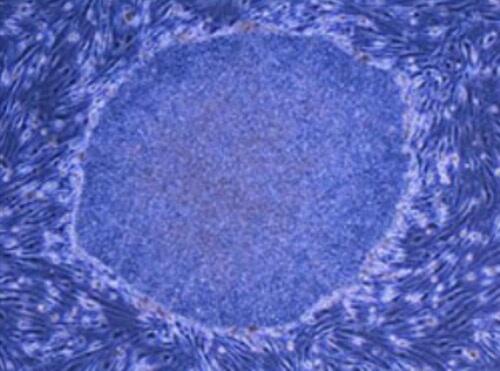
Provided by Shinya Yamanaka/Kyoto University and the Japan Science and Technology Agency (JST)
Based on knowledge accumulated through more than a decade of research
iPS cells are engineered to have the ability to turn into various types of cells by artificially introducing genes into somatic cells such as skin and blood cells. The Nobel Prize in Physiology or Medicine in 2012 was awarded to Professor Shinya Yamanaka of Kyoto University, who reported the creation of iPS cells from mouse cells in 2006 and from human cells in 2007. iPS cells have attracted attention for their use in regenerative medicine to repair tissues and organs lost due to injury or disease.
Recently, efforts to find new drugs have been underway. Saitou and his colleagues' research results are built on Yamanaka's groundbreaking iPS cell research and more than a decade of their own research and results. Saitou specializes in developmental biology and cell biology. He completed his doctoral studies at Kyoto University Graduate School of Medicine in 1999 and became a professor at the same school in 2009. From 2011 to 2018, he served as a research director of the JST Strategic Basic Research Program "ERATO."
According to Saitou and his colleagues, before eggs and sperm are formed, "primordial germ cells," which are the source of these cells, are first formed around 2 weeks after fertilization. In turn, they differentiate into "pro-spermatogonia" and "oogonia," which are precursors of sperm and eggs, in the testes and ovaries respectively, in the fetus 6−10 weeks later.
In 2012, Saitou and his colleagues succeeded, for the first time in the world, in producing eggs using mouse iPS cells and in vitro fertilizing the resulting eggs with unmanipulated sperm to produce offspring. Following this in 2015, they created "incipient mesoderm-like cells" by adding drugs and other substances to human iPS cells. Then, they succeeded in the highly efficient production of primordial germ cells by treating incipient mesoderm-like cells with a certain type of protein, which was published in the American scientific journal Cell Stem Cells in July of the same year. The group also succeeded in creating oogonia from human iPS cells, which was published in the American scientific journal Science in September 2018 and attracted considerable attention. However, only a small number of these cells could be obtained.
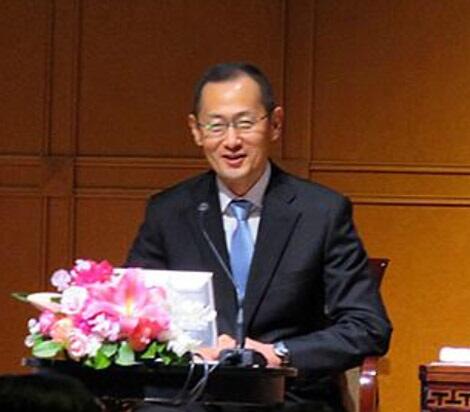
Photograph taken by the author
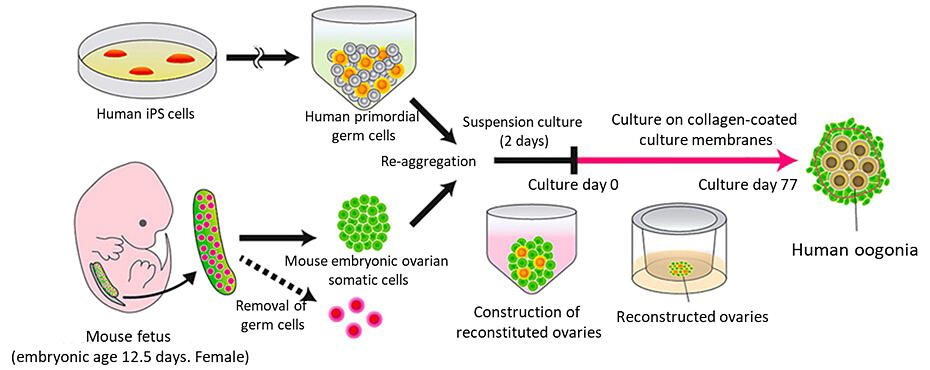
Provided by Professor Mitinori Saitou and his research group at Kyoto University
"We have clarified the mechanism of human germ cell development."
In this study, Saitou and his research group generated primordial germ cell-like cells (human PGCLCs) from human iPS cells using a unique method. These human PGCLCs were cultured in the presence of "BMP2," a protein found in the human body and also involved in bone formation.
As a result, they succeeded in producing oogonia and pro-spermatogonia in about 2 months. Furthermore, the number of cells increased 10 billion times after about 4 months of culture under conditions such as keeping the number of chromosomes stable. The results of this study have established a method for producing large quantities of pro-spermatogonia and oogonia. The ability to produce these cells in large quantities has made experimentation dramatically easier. Thus, this achievement is expected to boost germ cell research.
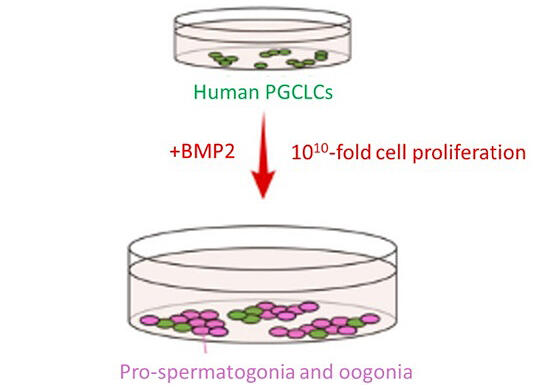
Provided by Professor Mitinori Saitou and his research group, Kyoto University
According to the research group, an "epigenomic reprogramming" reaction occurs during the differentiation of human germ cells. The "Epigenome" refers to changes in the chemical composition and structure of molecules that are not part of the genome sequence but are related to gene regulation. Epigenomic reprogramming is an in vivo reaction that resets parental epigenomic information. It is believed to be an important reaction related to the birth of life, but the details remain unclear.
The research group was also able to reproduce epigenomic reprogramming in creating oogonia and other cells and states that this series of studies has "elucidated the mechanism of human germ cell development." Yokogawa, a team member, commented, "The technology we have developed has the potential to revolutionize the future of reproductive medicine."
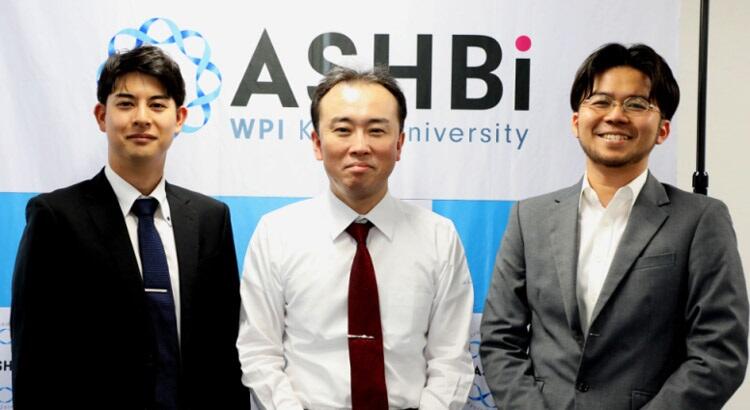
Provided by Kyoto University
Fertilized egg production from iPS cells or embryonic stem (ES) cells is prohibited
The national (Ministry of Education, Culture, Sports, Science, and Technology (MEXT)) guidelines were revised in 2010 to lift a ban on research to create human germ cells such as oogonia. However, the creation of fertilized eggs or human embryos using eggs and sperm made from human iPS or embryonic stem (ES) cells remains prohibited.
Regarding ethical issues in reproductive medicine, various topics are being extensively discussed by the Expert Panel on Bioethics (EPB) of the government (Cabinet Office). So far, a guideline revision plan of the MEXT and others to permit "nuclear transfer," in which the nucleus is removed from a fertilized egg of one person and transplanted into an enucleated, fertilized egg of another, only for basic research was approved in 2021. In June of last year, the EPB decided to discuss how to regulate the research handling clusters of human-fertilized egg-like cells, which can be produced from iPS cells, among other things.
In March of this year, the EPB recommended banning the implantation into the human body of "embryo models" replicating human fertilized eggs (embryos) using human iPS cells and other cells because "it is scientifically unreasonable and ethically unacceptable" and maintaining restrictions on research that leads to the birth of human life.
Meanwhile, the EPB may discuss the results of this study as a specific example of research progress since they are likely to advance future reproductive medicine.
(UCHIJO Yoshitaka / Science Journalist)
Original article was provided by the Science Portal and has been translated by Science Japan.




